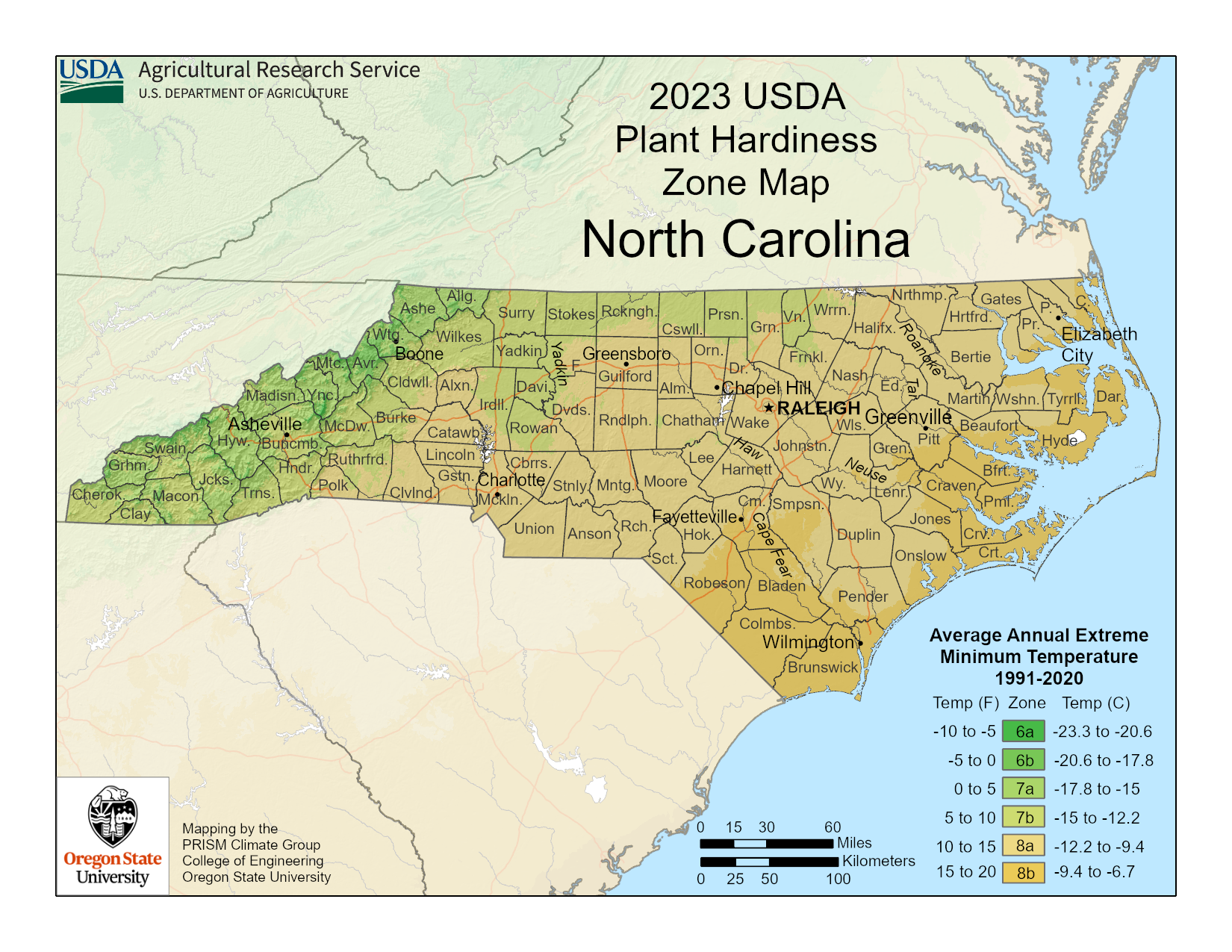- HOME
- 2023 USDA Plant Zone Update

New USDA Plant Hardiness Zone Map: Déjà vu All Over Again
By Tom Packer
The USDA has issued a new Plant Hardiness Zone Map, which can be accessed at this link: https://planthardiness.ars.usda.gov/
The last map was issued in 2012 and was based on weather data from 1976-2005, while the new 2023 map is based on data from 1991-2020. The data used is the lowest single temperature each year for 30 years which is then averaged.
The new zones can be found either by way of zip code entry or viewing a high-resolution map. It appears that many North Carolina counties have been redesignated half a zone up. For example, While Wake County in the 2012 map was mostly zone 7b with spots of zone 8a and Cabarrus County was zone 7b, in the new map they have returned to being in zone 8, where they previously had been from 1928 until the 1990 hardiness zone map.
The USDA reiterated that the hardiness zone maps are only a guide and that what has thrived in yards will most likely continue to thrive and that,
“No hardiness zone map can take the place of the detailed knowledge that gardeners learn about their own gardens through hands-on experience.”
Indeed, one well-known nursery owner noted that in Wake County, there have been six winters during the most recent 30-year dataset used when temperatures dipped below the minimum 8a temperature threshold. He predicts this means that for those gardeners who will now plant based on zone 8a, instead of 7b, they likely will lose their plants every five years. So, gardeners are well advised to learn about minimum temperatures in their area before making planting decisions.
Because the new map represents only 30-year averages (instead of 50-100 year averages) of what are essentially extreme weather events occurring on a single day, that is, the coldest temperature of the year, both the USDA and the developer of the two most recent maps (a group at Oregon State University) caution that:
“changes in zones are not reliable evidence of whether
there has been global warming.”
In addition to the temperature data collection, changes also resulted from additional data sources and improved numerical analysis methods.
If you are interested in more information about the history of the plant hardiness zones and development of the maps, in addition to the USDA website address above, you may also want to review this article written for gardeners by GAONC member Tom Packer:
